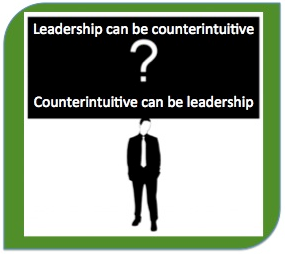I often find that what actually works for CEOs and leadership teams is counterintuitive. What was thought to be smart isn’t. And what was thought to be dumb may actually be a good idea. This is why I emphasize to clients that all planning should be done with the team, tapping into the experience, expertise, and viewpoints that you already employ. And yes, I know, that this sounds counterintuitive for some of you high-energy, get ‘er done CEOs and leaders. However, this approach will actually speed up the execution effort, as you will already have buy-in from the leaders whose support you’ll need.
In strategic planning with teams, you should dedicate separate time for:
1. Strategic thinking time. This time is when you think about the business and create your winning moves and is part of your long-term business foundation.
2. Execution planning time. This is when you essentially figure out what to do and how to get it done.
Most often these two are accomplished in back-to-back days of annual or quarterly planning. What I’ve discovered in fast-growth teams is that by separating strategic thinking time from execution planning time your team members have more clarity on exactly what they are to achieve.
Completion of the above takes effort, discipline, and time - yet will still leave you short of the business goal line if you stop here. Once you’ve thought about your company and customers and developed winning moves, and then developed an execution plan to get you there, the next pitfall you have to watch out for is not sharing the plan often enough or with enough people. In Rhythm® we create a visual dashboard that all members can see and be accountable for weekly. This visibility helps you better prioritize over time, execute with less waste (time and material), and immunize your team against negativity.
Be honest with yourself. Have you ever made it to the end of a quarter (or year) only to discover that you fell short of a priority determined at the beginning of the period? Even good companies do, and great companies must be vigilant to overcome this treadmill of average. I’m more convinced than ever that you should incorporate a rhythm of 2-day quarterly planning as well as a 2-day annual planning discipline in order to really control your destiny by focusing your company-wide effort.
As leaders, we must build a framework and discipline where there is no excuse for not knowing what you should be doing or where the company is going and for not making regular adjustments to get there. A client CEO may have said it best; “every quarter is 2 days of planning and 88 days of trying to get there.”
In case that sounds counterintuitive to you, consider this: 2 days per quarter in planning is less than 2.5% of your monthly leadership energy invested in clarity, adjustments, and accountability to get to your annual plan. Experience has proven that you either invest it together as a team in planned quarterly or annual events, or accept that you’re agreeing to pay for it over the quarter and the year with hallway conversations that don’t have all the right people in the room – and, cannot consider all view points – which results in rework, missed opportunity and duplicate conversations. The hidden cost is lower morale and lower team trust in company leadership.
Assuming that you’ve completed the above and that your team has a firm discipline of strategic and execution planning, how do you get everyone, all 100,000 or 10,000 or 100 team members correctly focused? In addition to using a dashboard for weekly review and accountability, take aim at the reward structures you've put in place—those decisions and initiatives that define what you reward and what you don’t reward . . . knowingly and unknowingly. Rewards are as simple as a public pat on the back, and they are surprisingly pervasive. If your team is underproductive, then this poor productivity may be the fruit of a counterintuitive, counter-productive reward structure. What gets rewarded, whether good or bad, is the very thing that your team members will repeat. Great leaders build meaningful KPI dashboards to ensure that the right behaviors are being monitored before ever considering any additional rewards. Learn more, watch our webcast: Build Awesome KPIs and Dashboards.
With correct KPI dashboards determined, you may now consider the additional fine points of formal and informal rewards. Formal rewards include anything consciously planned, formally introduced, and systematically distributed. They cover anything from gift certificates, oil changes, bonuses, and vacations to what I call PPT (plaques, pens, or trinkets).
It may seem counterintuitive to give serious consideration to your informal rewards; yet, this is where even the best leaders stumble. I believe this happens because we don’t realize how we distribute rewards (and how often others are watching). In the spirit of efficiency, CEOs unthinkingly reinforce the very behaviors that they don’t want - and often punish those that they do. Answer this question quickly, what is the reward for completing work early and well? The answer I most often see (and quite often hear) is more work and higher quotas. Let’s examine this more carefully:
Imagine a manufacturing facility, for example, with an efficient, thorough first-shift maintenance crew. They complete their work early. How might leadership reward them? It’s common for leaders to assign additional tasks that were on the list for second shift maintenance. Now imagine the second shift maintenance crew as a slow and sloppy bunch. When they arrive, the first-shift crew has completed some of their assignments. What has the leadership of this company just done? They just punished the high performing first-shift crew with more work and rewarded the poor performing second-shift crew with less. In a misguided logic of lean and optimal resource allocation, they have just dealt a blow to the very productivity they wish to increase. As I mentioned before, leadership can be counterintuitive.
Examples like the above are applied more frequently than most want to admit. Think back – how often have you assigned the most difficult (even unwelcome) tasks to your star performers? Have you seen the budgets of fiscally conscientious leaders slashed yet in the same company there were increases in the budgets of the free-spenders? This again is an example of discouraging initiative and creativity through punishment, while rewarding those who are least competent and performing poorly.
Get your key performance dashboards right, and don’t underestimate the power of formal and informal rewards. Like it or not, what you reward will be repeated. And, what’s repeated will become the culture of your company. Your “A” players will quickly tire of being dumped on and as a result will leave for another company (or stop performing). I’d love to hear how you dashboard and reward performers in the comment section below. And, if you’d like help in building awesome KPIs and Dashboards, watch our webcast: Build Awesome KPIs and Dashboards.
Keep growing!





